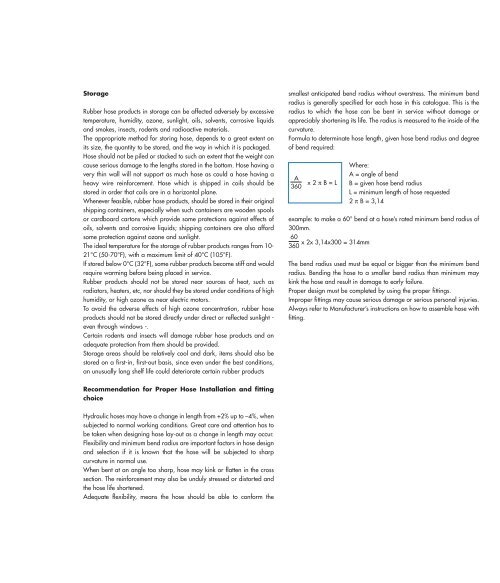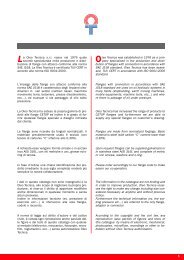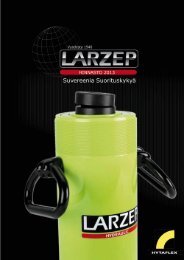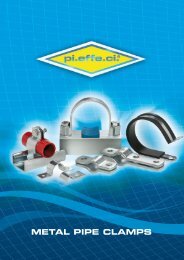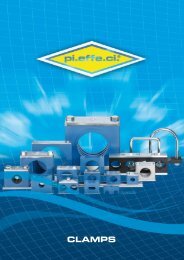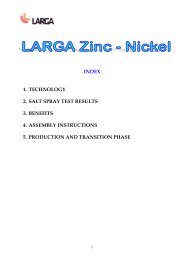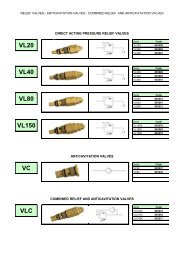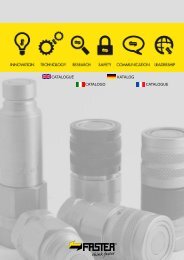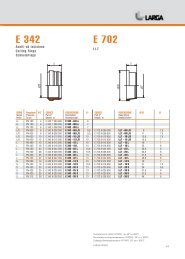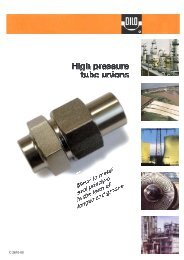fahrenheit 302/2
fahrenheit 302/2
fahrenheit 302/2
You also want an ePaper? Increase the reach of your titles
YUMPU automatically turns print PDFs into web optimized ePapers that Google loves.
Storage<br />
Rubber hose products in storage can be affected adversely by excessive<br />
temperature, humidity, ozone, sunlight, oils, solvents, corrosive liquids<br />
and smokes, insects, rodents and radioactive materials.<br />
The appropriate method for storing hose, depends to a great extent on<br />
its size, the quantity to be stored, and the way in which it is packaged.<br />
Hose should not be piled or stacked to such an extent that the weight can<br />
cause serious damage to the lengths stored in the bottom. Hose having a<br />
very thin wall will not support as much hose as could a hose having a<br />
heavy wire reinforcement. Hose which is shipped in coils should be<br />
stored in order that coils are in a horizontal plane.<br />
Whenever feasible, rubber hose products, should be stored in their original<br />
shipping containers, especially when such containers are wooden spools<br />
or cardboard cartons which provide some protections against effects of<br />
oils, solvents and corrosive liquids; shipping containers are also afford<br />
some protection against ozone and sunlight.<br />
The ideal temperature for the storage of rubber products ranges from 10-<br />
21°C (50-70°F), with a maximum limit of 40°C (105°F).<br />
If stored below 0°C (32°F), some rubber products become stiff and would<br />
require warming before being placed in service.<br />
Rubber products should not be stored near sources of heat, such as<br />
radiators, heaters, etc, nor should they be stored under conditions of high<br />
humidity, or high ozone as near electric motors.<br />
To avoid the adverse effects of high ozone concentration, rubber hose<br />
products should not be stored directly under direct or reflected sunlight -<br />
even through windows -.<br />
Certain rodents and insects will damage rubber hose products and an<br />
adequate protection from them should be provided.<br />
Storage areas should be relatively cool and dark, items should also be<br />
stored on a first-in, first-out basis, since even under the best conditions,<br />
an unusually long shelf life could deteriorate certain rubber products<br />
smallest anticipated bend radius without overstress. The minimum bend<br />
radius is generally specified for each hose in this catalogue. This is the<br />
radius to which the hose can be bent in service without damage or<br />
appreciably shortening its life. The radius is measured to the inside of the<br />
curvature.<br />
Formula to determinate hose length, given hose bend radius and degree<br />
of bend required:<br />
A<br />
360<br />
x 2 π B = L<br />
Where:<br />
A = angle of bend<br />
B = given hose bend radius<br />
L = minimum length of hose requested<br />
2 π B = 3,14<br />
example: to make a 60° bend at a hose’s rated minimum bend radius of<br />
300mm.<br />
60<br />
x 2x 3,14x300 = 314mm<br />
360<br />
The bend radius used must be equal or bigger than the minimum bend<br />
radius. Bending the hose to a smaller bend radius than minimum may<br />
kink the hose and result in damage to early failure.<br />
Proper design must be completed by using the proper fittings.<br />
Improper fittings may cause serious damage or serious personal injuries.<br />
Always refer to Manufacturer’s instructions on how to assemble hose with<br />
fitting.<br />
Recommendation for Proper Hose Installation and fitting<br />
choice<br />
Hydraulic hoses may have a change in length from +2% up to –4%, when<br />
subjected to normal working conditions. Great care and attention has to<br />
be taken when designing hose lay-out as a change in length may occur.<br />
Flexibility and minimum bend radius are important factors in hose design<br />
and selection if it is known that the hose will be subjected to sharp<br />
curvature in normal use.<br />
When bent at an angle too sharp, hose may kink or flatten in the cross<br />
section. The reinforcement may also be unduly stressed or distorted and<br />
the hose life shortened.<br />
Adequate flexibility, means the hose should be able to conform the


